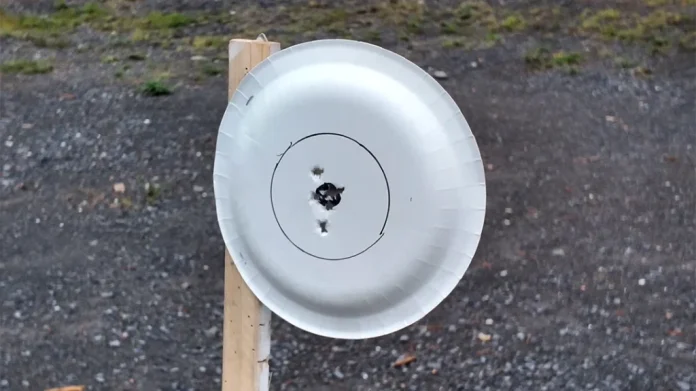[[{“value”:”
Thank you for reading this post, don't forget to follow and signup for notifications!
This post was originally published on this site.
Getting solid range time can be a challenge. But getting meaningful reps in while keeping your ammo budget under control? That’s the real trick. That’s why the Ammo Saver series exists: to offer focused, functional drills that deliver high returns without burning through your stash of rounds. In today’s installment, we practice with scaled-down targets to emphasize the age-old philosophy of “aim small, miss small.”
What Does “Aim Small, Miss Small” Mean?
This one might be the simplest in concept, but don’t underestimate its value. “Aim Small, Miss Small” is an old phrase with real teeth. It dates back to the 1700s and probably earlier, but its relevance has never faded.
The idea is simple: aim at a small target and your misses will still be small. Aim at a big one, and your margin for error expands along with it. Precision starts with intention.
Advertisement — Continue Reading Below
Shrinking the Target
One of the most effective ways to stretch your training on a limited pistol bay is to scale the target instead of the distance. That might not sound sexy, but it works.
A one-inch black circle on a paper plate may not look like much. However, at 30 feet, it’s smaller than your front sight. And hitting that dot forces you to dial in every part of your process. This includes stance, presentation, sight alignment, and most critically, trigger control.
This drill works across all firearm platforms. You can shoot it with a carbine, your favorite semi-auto, or a rimfire. But for the video, I ran it with a Colt Grizzly. This is a gorgeous .357 Magnum revolver with a 4-inch ported barrel.
Advertisement — Continue Reading Below
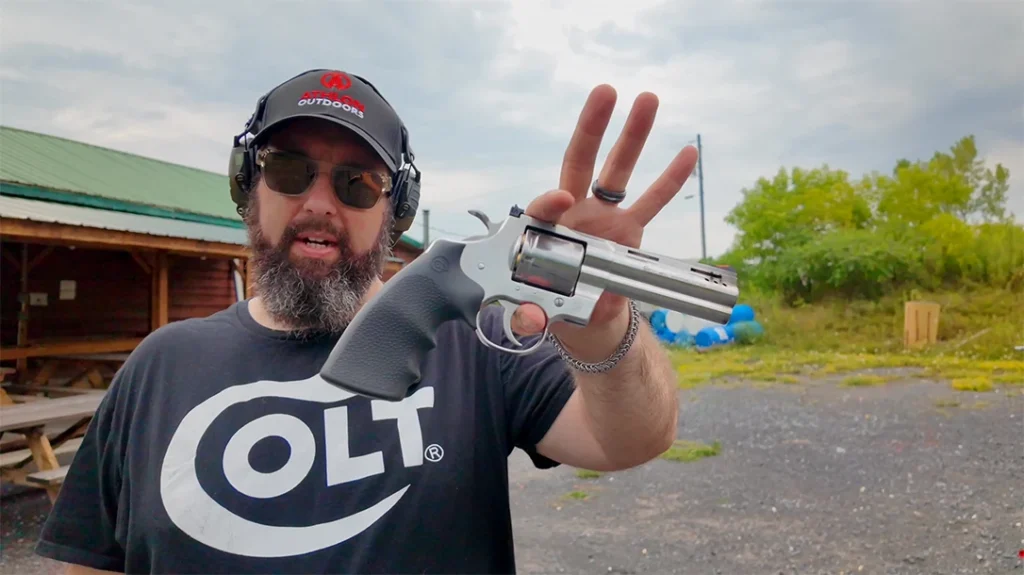
I kept it slow, deliberate, and ran it double-action, one round at a time from low ready. Why? Because it forces you to bring the gun up with purpose, find the sight cleanly, and break a clean shot with intent.
You don’t need fancy steel or reactive targets. You don’t even need a formal range for those of us who can shoot on our own property. A cardboard backer and a Sharpie will get you started. I often run this with students using a Shoot-N-C sticker, but the dot itself doesn’t matter; a Sharpie is fine. What matters is how honestly it exposes your accuracy.
Advertisement — Continue Reading Below
Mechanics of Precision
This drill isn’t about speed. It’s about building that quiet consistency that lives just underneath the chaos of real-world shooting. From low ready, you present the gun, confirm your sight picture, and press a single shot into that small dot. That’s it. Then do it again.
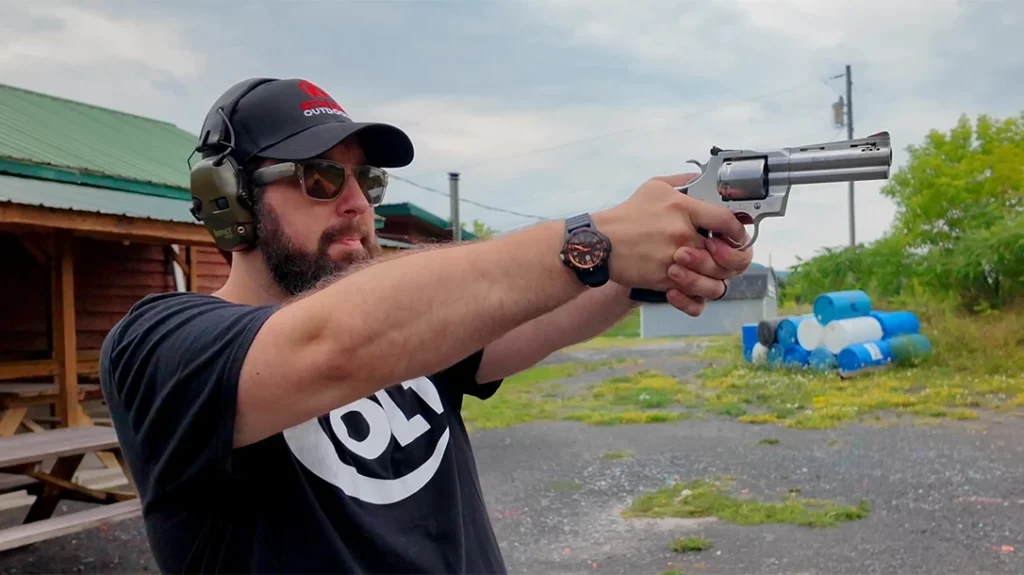
If you’re running a red dot, this drill pays dividends. One-inch targets at moderate distances will quickly expose your optical parallax. A common issue with red dot users, especially on pistols, is not understanding how the optic sits over the bore. The closer your target is, the more pronounced that offset becomes.
Advertisement — Continue Reading Below
In this drill, your shots may begin to trend high above the dot. That’s useful data. It shows you where your gun actually prints and helps you decide whether your zero is suited to your shooting application or needs to be adjusted.
For revolver shooters or anyone working on double-action trigger control, this drill is brutally honest. That long pull tends to amplify errors in grip, sight dip, and inconsistent pressure. But that’s what makes it such a powerful teacher. With time and repetition, the gun begins to behave, because you begin to behave.
Real Training
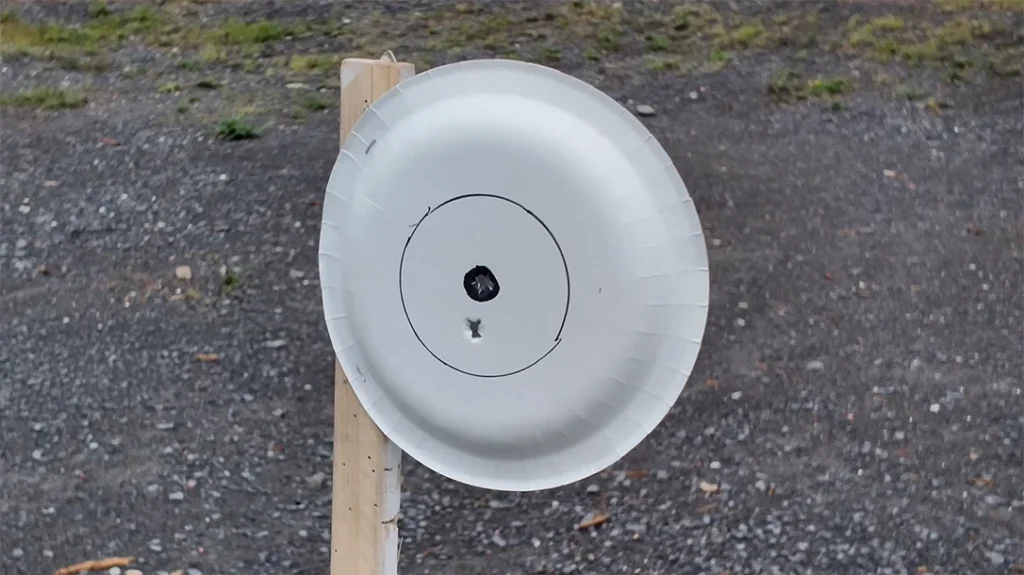
Advertisement — Continue Reading Below
I’ve used this drill with many one-on-one students looking to improve their practical accuracy. It’s never flashy, but it’s always effective. When we focus on one small target and strip away the rest—no timers, no transitions, no reloads—students get to feel what “right” feels like. And once that’s locked in, we can build back up to more dynamic drills.
You can scale this however you want. Add movement. Add follow-up shots. String together multiple plates. Layer in magazine changes or integrate it into your draw stroke. But I’d argue the purest form of this drill, the one that makes the most impact, is this: low ready, single shot, no distractions. It’s just you, the gun, and the dot.
Final Shots
If you’re honest with yourself on the range, this drill will show you where you need work. And the beauty is that it costs almost nothing to run. Ten rounds into ten one-inch dots will teach you more than a hundred rounds flung at a silhouette.
Advertisement — Continue Reading Below
Aim Small Miss Small might be the least glamorous drill in the Ammo Saver series. However, it’s also the one that’ll improve your performance across the board. No matter what you carry or compete with.
Shoot safe.
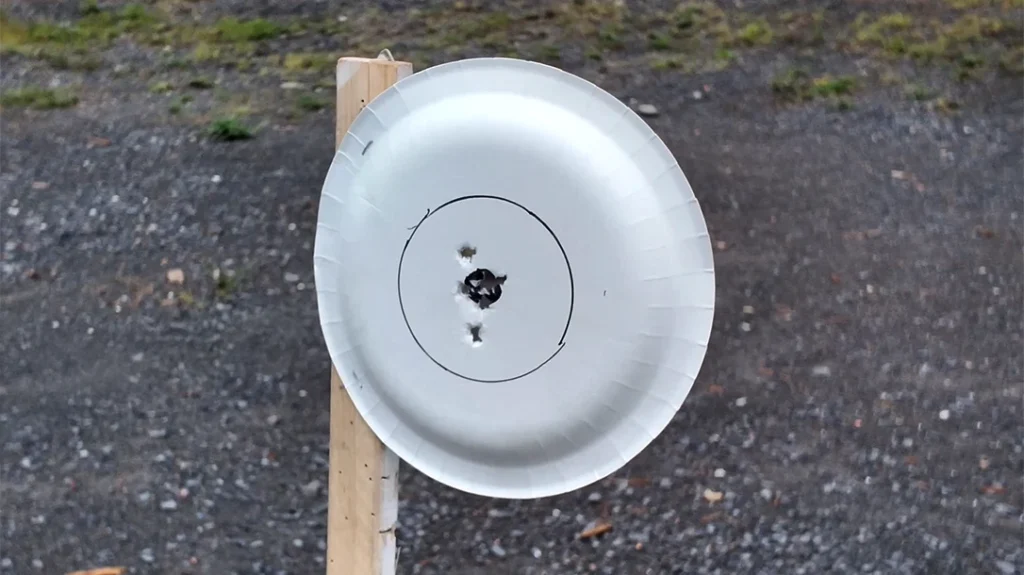
The post Ammo Saver: Practicing “Aim Small, Miss Small” Principle with Scaled-Down Targets appeared first on Athlon Outdoors Exclusive Firearm Updates, Reviews & News.
“}]]


